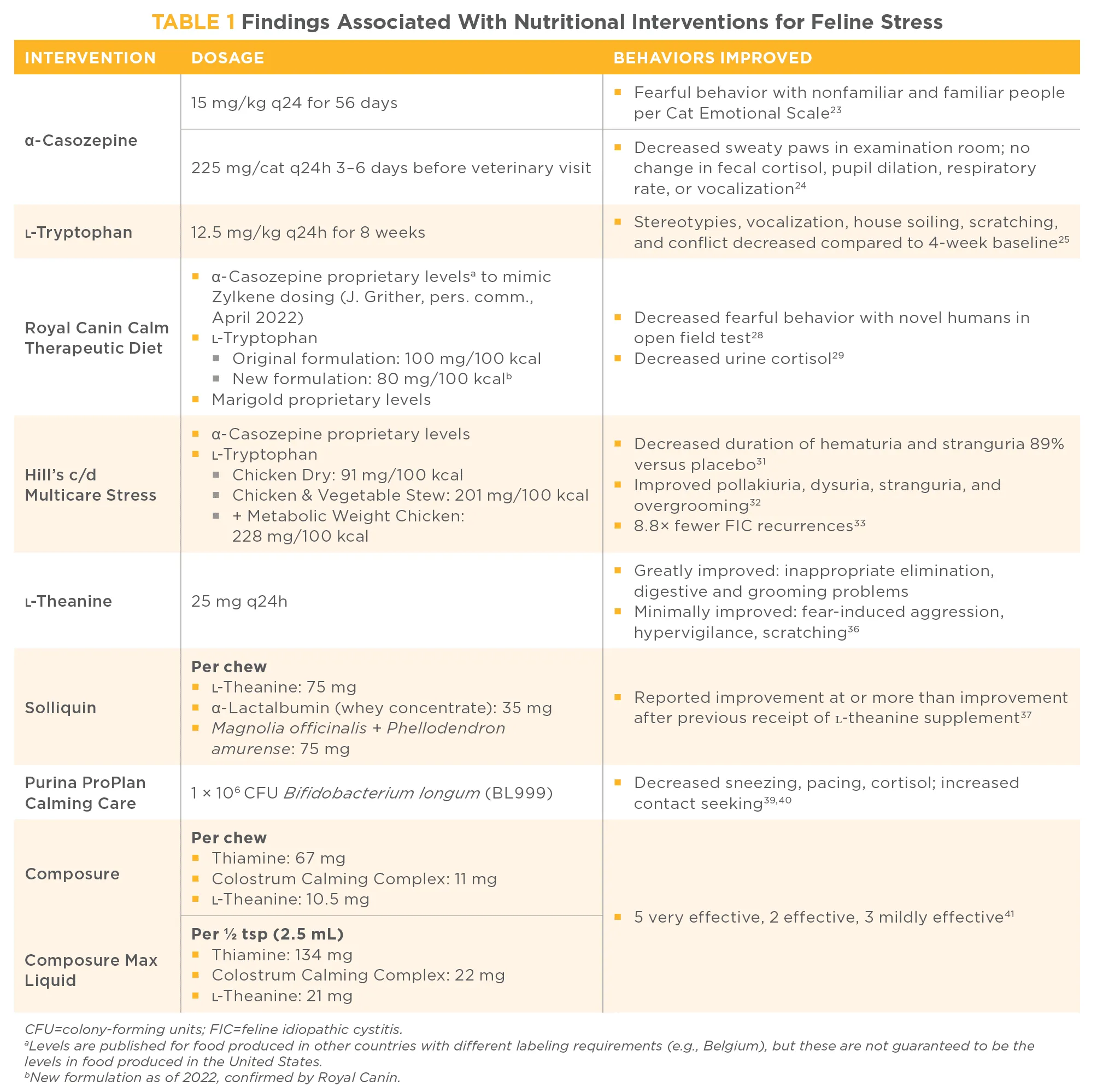Cats, known for their independent nature, can still experience significant stress from environmental changes, social dynamics, or health issues. Understanding nutritional management for cat stress is crucial for pet owners seeking natural ways to support their feline companions’ well-being. Stress in cats often manifests in behaviors like hiding or inappropriate elimination and can exacerbate conditions such as feline idiopathic cystitis (FIC). This article explores evidence-based nutritional strategies, drawing from veterinary research to help reduce stress responses and promote a return to homeostasis. For more on related urinary health support, check out our guide to urinary diet cat food.
Understanding Feline Stress and Its Triggers
Stress in cats involves the acute stress response, activating the hypothalamic-pituitary-adrenal (HPA) axis and releasing mediators like cortisol, epinephrine, and norepinephrine. While acute stress helps cats adapt to threats like loud noises or new pets, chronic or pathologic stress— from prolonged exposure to stressors—prevents return to baseline. Common feline stressors include lack of species-typical needs, such as perching spots, hiding areas, separate litter boxes, and scratching posts. Environmental shifts like moving homes, fireworks, or introducing unfamiliar animals also trigger anxiety or fear.
Cats are less domesticated than dogs, thriving in matrilineal groups but often stressed in multi-cat households with unrelated felines. Human habits, like cheering at sports events, can overwhelm sensitive ears and nerves. Recognizing these helps in proactive management, where nutrition plays a supportive role alongside environmental enrichment.
Recognizing Signs of Stress in Cats
Owners often spot obvious signs: hiding, hissing, swatting, urine marking, or destructive scratching. Subtler cues include avoidance—cats steering clear of people or other pets, ceasing mutual grooming, or limping from undetected pain like osteoarthritis. Veterinary assessments rule out underlying medical issues first, as pain amplifies stress. Early detection allows timely interventions, including targeted nutrition to modulate neurochemical responses.
Key Nutritional Strategies to Reduce Cat Stress
When eliminating stressors isn’t fully possible—such as noisy neighbors or work-related separations—nutritional aids offer a client-preferred alternative to medications. These Generally Recognized As Safe (GRAS) supplements and diets target GABA, serotonin pathways, and more, backed by clinical trials.
α-Casozepine (Zylkene)
Derived from milk protein, α-casozepine mimics benzodiazepine effects on GABA-A receptors without sedation. Multicenter trials showed reduced fear toward strangers, improved autonomic signs like pupil dilation, and fewer stress behaviors over 8-12 weeks at 15 mg/kg doses.
L-Tryptophan Supplementation
As a serotonin precursor, L-tryptophan at 12.5 mg/kg reduced stereotypies, vocalizations, conflicts, and house soiling in multi-cat homes after 8 weeks, per a placebo-controlled study.
Specialized Therapeutic Diets
- Royal Canin Calm: Combines α-casozepine, L-tryptophan, and serotonergic marigold extract. Feeding for 2-4 weeks decreased fearful behaviors and urine cortisol in open-field tests.
- Hill’s c/d Multicare Stress: Features αS1-casein hydrolysate, omega-3s, and glucosamine/chondroitin. Trials reported 89% reduction in hematuria/stranguria, improved emotional scales, and lower FLUTD recurrence odds.
For cats with digestive sensitivities linked to stress, explore natural remedies for cat digestion.
 Table 1: Dosage recommendations and behaviors improved by supplements and diets for feline stress management
Table 1: Dosage recommendations and behaviors improved by supplements and diets for feline stress management
Other Promising Options
- Anxitane (L-Theanine): Green tea-derived, boosts GABA, serotonin, dopamine. Reduced elimination and grooming issues in an open-label trial.
- Solliquin: Blends L-theanine, α-lactalbumin, and herbal extracts; case reports note fear response improvements.
- Purina ProPlan Calming Care: Probiotic Bifidobacterium longum BL999 lowered sneezing, pacing, and cortisol in FHV-1 cats.
- Composure: Includes L-theanine and colostrum calming complex; owner reports suggest broad efficacy, though peer-reviewed feline data is limited.
Supporting cat gut health via probiotics can further aid stress modulation, as gut-brain connections influence feline anxiety.
Increased water intake through wet foods may benefit FIC but shows mixed stress relief results.
Choosing the Best Nutritional Intervention for Your Cat
Select based on palatability, comorbidities, and preferences—capsules like Zylkene suit picky eaters, chews like Anxitane appeal to treat-lovers. Avoid flavored bases in cats with food allergies; opt for diets with urinary or joint support. Pair with a full nutritional assessment to calculate resting energy needs, ensuring weight management.
Food puzzles mimic hunting, reducing boredom-induced stress. Transition gradually, monitoring for frustration.
For breed-specific issues, like Maine Coon diarrhea, consider tailored nutrition. Omega-3 enriched options also promote best skin and coat supplement for cats.
Conclusion: Holistic Stress Relief for Cats
Nutritional management excels as an adjunct to removing stressors and enriching environments—providing targeted support for HPA axis balance. Consult your veterinarian to rule out medical causes and customize plans, combining diets, supplements, and lifestyle tweaks for optimal results. With patience, you can help your cat reclaim calm and comfort.
References
- Veterinary sources like Today’s Veterinary Practice (2022).
- Studies cited: Beata et al. (2007, 2009); King et al. (2004).
- Royal Canin, Hill’s Pet Nutrition clinical trials.
Always verify with a vet for personalized advice.
